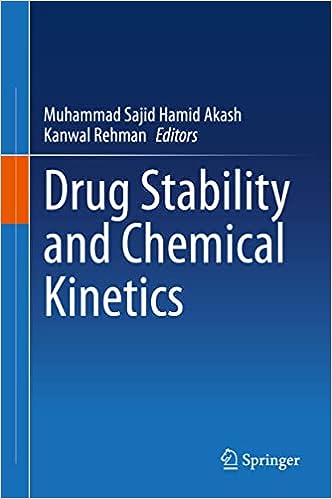Expert Insights on Stability Testing for Biologics and Its Impact on Regulatory Approvals
Introduction
Biologics are complex pharmaceutical products derived from living organisms, including vaccines, monoclonal antibodies, and recombinant proteins. Stability testing for biologics is critical to ensure these products maintain their efficacy, safety, and quality throughout their shelf life. Regulatory agencies such as the FDA, EMA, and WHO place stringent requirements on stability testing for biologics due to their sensitivity to environmental factors. This article explores the role of stability testing in regulatory approvals for biologics, highlighting key requirements, challenges, and best
Why Is Stability Testing Important for Biologics?
Unlike chemically synthesized drugs, biologics are inherently unstable and highly sensitive to changes in temperature, pH, and other environmental factors. Stability testing ensures:
- Product Integrity: Evaluating physical, chemical, and biological properties under various conditions.
- Patient Safety: Preventing degradation that could lead to adverse reactions.
- Regulatory Compliance: Generating robust data to support shelf-life claims and labeling requirements.
Key Stability Testing Parameters for Biologics
1. Physical Stability
Biologics must retain their structural integrity to remain effective. Common tests include:
- Aggregation Studies: Evaluating the formation of protein aggregates that can affect safety and efficacy.
- Visual Inspection: Detecting changes in appearance, such as discoloration or precipitation.
2. Chemical Stability
Assessing the degradation of biologics is critical for ensuring potency. Key tests include:
- Degradation Product Analysis: Identifying and quantifying breakdown products.
- Potency Assays: Measuring the biological activity of the product over time.
3. Biological Stability
Evaluating the functional activity of biologics under various conditions is essential. Common methods include:
- Cell-Based Assays: Measuring the product’s ability to elicit a biological response.
- Immunogenicity Testing: Assessing the risk of immune reactions caused by product degradation.
Regulatory Requirements for Stability Testing of Biologics
1. Global Guidelines
Stability testing for biologics must adhere to international guidelines, including:
- ICH Q5C: Stability testing of biotechnological/biological products.
- WHO Guidelines: Stability requirements for vaccines and biological therapeutics.
2. Study Types
Regulatory agencies require multiple types of stability studies for biologics:
- Long-Term Studies: Conducted under recommended storage conditions to determine shelf life.
- Accelerated Studies: Performed at elevated conditions to simulate long-term effects in a shorter period.
- Stress Testing: Evaluating the impact of extreme conditions (e.g., freezing, heat) on product stability.
3. Data Requirements
Regulatory submissions must include detailed stability data, such as:
- Physical, chemical, and biological stability profiles.
- Justifications for proposed shelf life and storage conditions.
- Packaging and labeling recommendations.
Challenges in Stability Testing for Biologics
1. Complexity of Biologics
The structural and functional complexity of biologics poses challenges in designing stability studies. Key issues include:
- Difficulty in predicting degradation pathways.
- Sensitivity to minor environmental fluctuations.
2. Limited Shelf Life
Biologics often have shorter shelf lives compared to small molecules, requiring robust cold chain systems for distribution and storage.
3. Regulatory Variability
While global guidelines provide a framework, regional regulatory agencies may have additional requirements, complicating compliance.
Best Practices for Stability Testing of Biologics
To address the unique challenges of biologics, manufacturers should adopt the following best practices:
- Define Critical Quality Attributes (CQAs): Identify attributes critical to product performance, such as potency and aggregation.
- Use Advanced Analytical Methods: Leverage tools like mass spectrometry and high-performance liquid chromatography (HPLC) for precise analysis.
- Invest in Cold Chain Systems: Ensure that storage and transport systems maintain recommended conditions to prevent stability issues.
- Validate Analytical Methods: Ensure all methods meet regulatory standards for accuracy and reproducibility.
- Engage with Regulators: Collaborate with regulatory agencies early in the development process to clarify stability requirements.
Emerging Trends in Stability Testing for Biologics
1. Digital Transformation
Advanced data management systems are streamlining stability testing, enabling real-time monitoring and automated reporting.
2. Predictive Modeling
AI-driven tools are being used to forecast stability trends, reducing reliance on extensive long-term studies.
3. Sustainable Practices
Efforts to reduce waste and energy consumption are leading to eco-friendly stability testing protocols, particularly for biologics requiring cold storage.
Impact on Regulatory Approvals
Robust stability testing programs significantly influence regulatory approvals for biologics by:
- Demonstrating compliance with global and regional guidelines.
- Providing scientific justification for proposed shelf life and storage conditions.
- Enhancing the credibility of regulatory submissions through comprehensive data.
Stability data serves as a foundation for evaluating the quality, safety, and efficacy of biologics, ultimately determining their market approval.
Conclusion
Stability testing is a critical component of regulatory submissions for biologics, addressing the unique challenges posed by their complexity and sensitivity. By adhering to global guidelines, adopting advanced analytical methods, and engaging with regulatory authorities, manufacturers can develop robust stability programs that support successful approvals. As technology and sustainability initiatives evolve, stability testing for biologics will continue to advance, ensuring the delivery of safe and effective therapies to patients worldwide.

